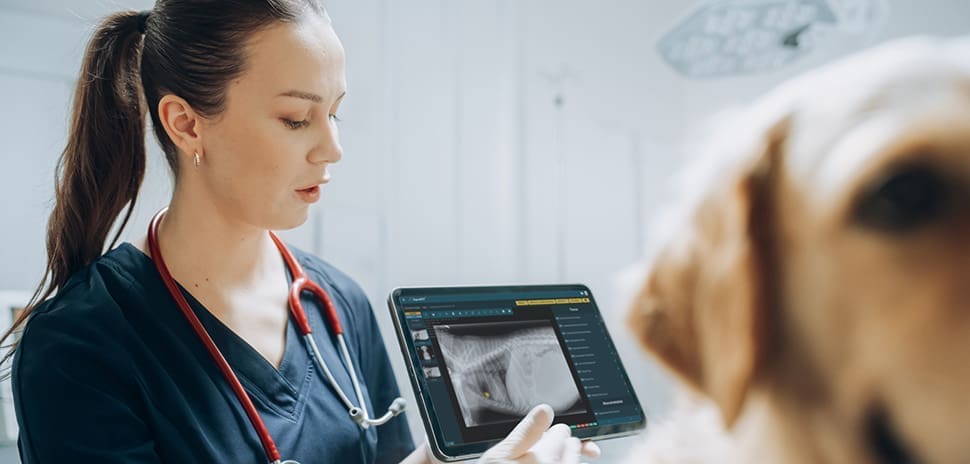In the ever-evolving landscape of veterinary medicine, staying ahead of the curve is paramount. Technological advancements have played a pivotal role in enhancing diagnostics and treatment protocols for our beloved animal companions. One such breakthrough that is transforming the way veterinarians approach healthcare is the utilization of advanced X-ray technology. In this blog, we’ll delve into the world of Veterinary Advanced X-ray technology, exploring its applications, benefits, and the significant impact it has on the well-being of our furry friends.
The Evolution of Veterinary Advanced X-Ray Technology
Early Days: A Glimpse into the Past
X-ray technology in veterinary medicine isn’t a new concept. The history traces back to the early 20th century when veterinarians began employing X-rays for diagnostic purposes. However, the equipment was rudimentary, and the images produced were often of low quality.
Cutting-Edge Advancements
Fast forward to the present, and we find ourselves in an era where Veterinary Advanced X-Ray Technology has undergone remarkable advancements. With digital radiography, veterinarians can now obtain high-resolution images in a matter of seconds, enabling swift and accurate diagnoses.
Applications of Veterinary Advanced X-Ray Technology
Precise Diagnosis
One of the primary advantages of advanced X-ray technology is its ability to provide precise and detailed images of internal structures. From identifying fractures and assessing organ health to detecting tumors and foreign objects, the diagnostic capabilities are unparalleled.
Dental Health Assessment
Dental issues are common among pets, yet they can be challenging to diagnose without proper imaging. Advanced X-ray technology allows veterinarians to examine the teeth, roots, and surrounding structures with exceptional clarity, facilitating early detection and treatment of dental problems.
Orthopedic Evaluations
In the realm of orthopedics, this technology is a game-changer. It enables veterinarians to thoroughly evaluate joints and bones, crucial for diagnosing conditions such as arthritis, hip dysplasia, and ligament injuries. The detailed images aid in creating targeted treatment plans for optimal outcomes.
Pre-Surgical Planning
Before embarking on a surgical procedure, veterinarians use advanced X-ray technology for pre-surgical planning. This ensures they have a comprehensive understanding of the patient’s anatomy, allowing for precise and minimally invasive surgeries.
Benefits for Veterinarians and Pet Owners
Enhanced Efficiency
Traditional X-ray films were time-consuming to develop and often required retakes. With advanced technology, the process is streamlined, providing veterinarians with immediate access to images. This not only expedites the diagnostic process but also enhances the overall efficiency of veterinary practices.
Reduced Radiation Exposure
Concerns about radiation exposure have been a long-standing issue with traditional X-rays. Veterinary Advanced X-ray technology mitigates this concern by significantly reducing radiation doses while maintaining image quality. This is especially crucial for both veterinary staff and the animals being examined.
Client Education
The clear and detailed images generated by advanced X-ray technology serve as valuable educational tools. Veterinarians can visually explain diagnoses and treatment options to pet owners, fostering a deeper understanding and collaboration in the care of their pets.
Real-Life Success Stories
A Tale of Recovery: Lucky the Labrador
Lucky, a Labrador with an inexplicable limp, was brought to Dr. Anderson’s veterinary clinic. Traditional X-rays were inconclusive, prompting the use of advanced X-ray technology. The images revealed a small, hidden fracture in Lucky’s paw. Thanks to this precise diagnosis, a targeted treatment plan was implemented, and Lucky is now back on all fours, joyfully playing fetch once again.
Navigating a Delicate Surgery: Whiskers the Cat
Whiskers, a domestic shorthair cat, needed delicate surgery for a suspected intestinal blockage. Advanced X-ray technology allowed Dr. Martinez to visualize the exact location and nature of the blockage, enabling a successful surgery with minimal invasiveness. Whiskers made a speedy recovery, much to the relief of his worried owners.
The Future of Veterinary Advanced X-Ray Technology
As technology continues to evolve, so does the potential of Veterinary Advanced X-Ray Technology. Emerging innovations include 3D imaging, artificial intelligence integration for image analysis, and portable X-ray devices for on-the-go diagnostics. These advancements hold the promise of further revolutionizing veterinary medicine, providing even more accurate and efficient healthcare solutions for animals.
Must Read about: Revolutionizing Healthcare: Portable X-Ray Solutions
Conclusion
In the realm of veterinary medicine, embracing technological advancements is not just a choice; it’s a necessity. Veterinary Advanced X-Ray Technology stands as a testament to how innovation can significantly impact the well-being of our beloved pets. As we continue to unlock mysteries and push the boundaries of what’s possible, one thing is certain – the future of veterinary care looks radiant.
Call to Action
Ready to elevate your veterinary practice with state-of-the-art X-ray solutions? Explore our specialized range of Veterinary X-ray Systems designed to meet the unique needs of small animal diagnostics.

